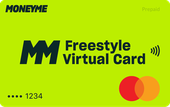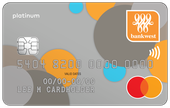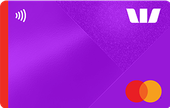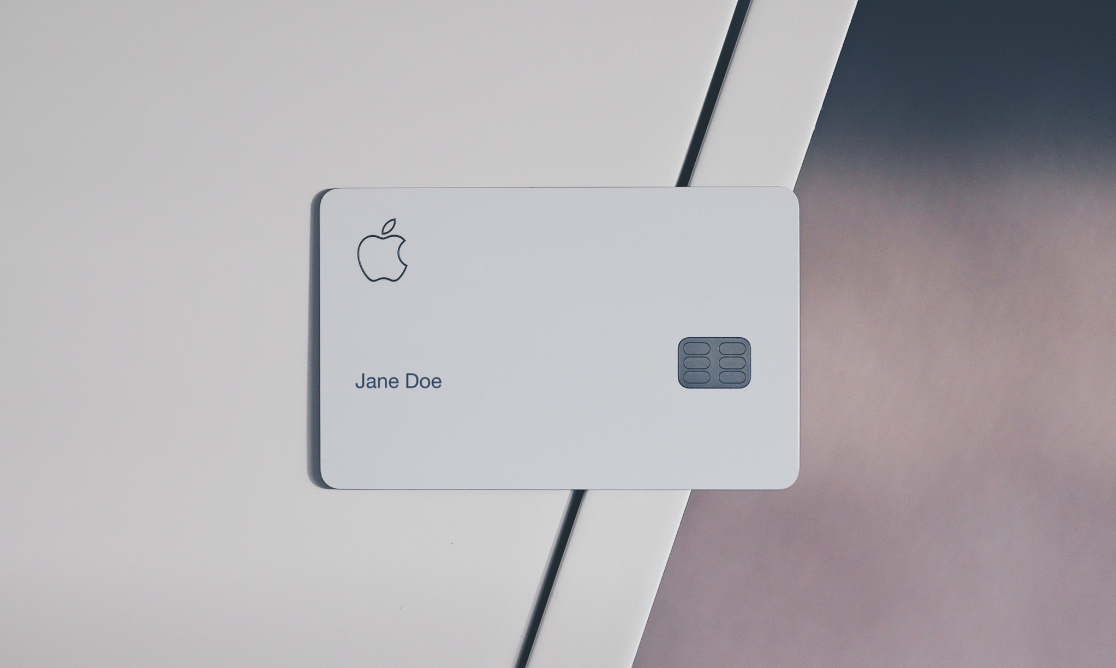- The Apple Card can work as a traditional credit card, but it operates mostly as a digital card.
- It is a metal card that earns cash rewards.
The Apple Card is a new type of credit card. Its appeal lies in the fact that it’s an Apple product and it appears innovative, but before jumping on board it pays to view it objectively.
Read on to discover more about how it operates and what the buzz is all about.

Inside this review
What is the Apple Card?
The Apple Card is a credit card developed by the Apple company. The card is issued by Goldman Sachs (and Mastercard). It can work as a traditional credit card, but it operates mostly as a digital card. It is designed to integrate with the iPhone Wallet app and works best with Apple Pay.
How does the Apple Card work?
The Apple Card is a physical credit card that doesn’t display any of the usual information, such as a number, CVV, or expiration date, other than the account holder’s name.
When you receive the physical card, you will need to activate it. The process is slightly different based on the operating system (iOS) version.
Anyone with newer iOS versions on their iPhones can simply hold the phone close to the card to activate it. Those with older models will need to use the Wallet app to activate the card.
The Apple Card functions in conjunction with Apple Pay. When making a payment in-store, the cardholder will need to look out for an Apple Pay or ‘Tap and Pay’ symbol.
You then need to double-tap the side button on your phone and use the facial recognition function to authenticate the action. Then simply hold the phone close to the reader, which confirms the payment.
If there is no Apple Pay contactless payment terminal available, the applicant can use their physical card. The applicant can simply use the Apple Pay button (and authenticate the purchase) to make purchases online and complete the transaction.
If that is not available, you can get your card details from the Wallet app. Then fill out the online purchase forms in the traditional way.
Is the Apple Card available in Australia?
The Apple Card is not yet available in Australia. Apple has not announced any plans to expand outside the US. There are, however, some credit cards with cashback benefits out there. A great compromise is to get one of these credit cards and ensure it works in conjunction with Apple Pay.
Key features
Let’s look at some of the stand-out features of the Apple Card:
- Cashback rewards. You can get 3% cashback for purchases at select retailers. If you use Apple Pay, you get 2% cashback regardless of the retailer. When using the titanium card, the cashback reward is 1%.
- Absence of some fees. There are no annual fees and no fees for transactions. There are no penalty fees for late payments, but interest will be charged if payments aren’t made on time.
- Flexible credit limits. Just like a traditional credit card, it depends on your credit score and earnings at the time of application. But there are limits as low as $50 and as high as $15,000.
- Exclusive use. The card can only be used by you.
- Apple Card family. As a compromise to the point above, Apple Play allows you to co-own an Apple Card with one family member1. You are also entitled to invite another Apple Card owner to form a combined account. This will allow you to combine your credit limit.
- Estimate interest rates in real time. This feature is beneficial when budgeting. When you select a potential payment amount, it will calculate how much interest you’ll need to pay. You can then make adjustments based on the information the app provides.
- Track spending. The Wallet app will display all transactions and where they took place. This feature is integrated with Apple Maps.
Pros and cons
Let’s take a look at some of the pros and cons of the Apple Card.
Pros
- There are cashback rewards for the user, which can vary between 3%, 2%, or 1% of the transaction value.
- There is no annual fee, which means you will not lose money if you decide not to use the card.
- Track your finances and spending habits in the app.
- The card has strong security. Authentication takes place through facial recognition.
- Apple won’t track any details regarding your transactions and sell your data.
Cons
- Variable interest based on credit. There is a minimum APR of 13.24% and a maximum APR of 24.24%. This depends on the applicant’s credit history and is higher than many credit card options on the market.
- The cashback rewards aren’t competitive, and other credit cards offer better rates.
Apple Card alternatives in Australia
There are many virtual credit card options available in Australia. Some top contenders are listed below.

Highlights
- Use virtual card instantly once approved (typically within 60 mins)
- Tap n Pay with up to 55 days interest free
- Use credit to transfer money to anyone
- Exclusive features
- Thousands of 5-star customer reviews
Bank promo
Pros
Cons

Highlights
- Annual fee waived.
- 0% p.a. for 6 months on purchases and transferred balances (with a 3% balance transfer fee). Returns to 18.99% p.a. thereafter.
- Offer valid for new customers within a specified timeframe. Additional fees and terms and conditions apply.
Pros
Cons

On website
Highlights
- Earn 50,000 bonus points when you spend a minimum of $3,000 in the first 3 months from approval. Apply online by 28 October 2021.
- No annual fee for the life of the card.
- Earn 1 point for every $1 spent on eligible transactions, uncapped, and spend your points almost anywhere online.
Pros
Cons

Highlights
- Earn up to $300 cashback when you spend at least $1,500 on eligible purchases every month for the first 6 months after card approval. Terms and Conditions apply.
- Get 0% interest for 6 months on purchases of $250 or more, ideal for spreading out larger expenses.
- Use the interest-free payment options at numerous stores like Harvey Norman, Domayne, Joyce Mayne, and more.
Pros
Cons

Highlights
- 0% interest and $0 late payment fee.
- $10 monthly fee, or no outstanding balance, $0 fee.
- Access to Westpac Extras and Rewards.
Pros
Cons
FAQs
Can Android users get an Apple Card?
No. You will need an iOS device to use Apple Pay and the Apple Card. You can also only sign up for an Apple Card with an iPhone.
Does Apple Card have the Tap and Pay function?
Yes, the Apple Card does have the Tap and Pay function.
Can you withdraw cash from your Apple Card?
No, there are no cash advance features available on the Apple Card.
Is Apple Card accepted everywhere?
You can pay with your Apple Card, where Apple Pay is accepted. If Apple Pay is not accepted at the retailer, you can use the titanium Apple Card where Mastercard is accepted.
What credit score do you need for the Apple Card?
Customers with a credit score lower than 600 may face rejection when applying for the card. As a result, a credit score above 600 could be approved. The limits on the card will depend on the strength of the applicant’s credit score.
The bottom line
The Apple Card is a credit card that can be used exclusively by iPhone users and is likely to be popular with anyone who likes Apple products. The card boasts some great security features and has a physical card when Apple Pay is not supported.
There are some drawbacks to the card, and it may not prove to be the most financially beneficial option when compared with other cards. In terms of functionality, however, it does achieve the main goals of a digital and physical credit card.


